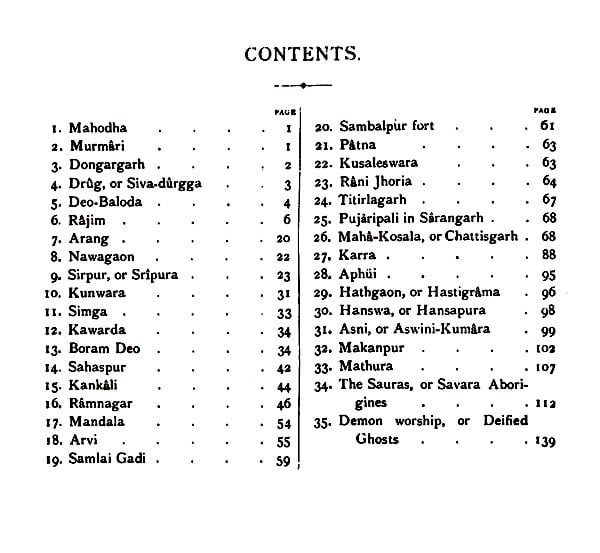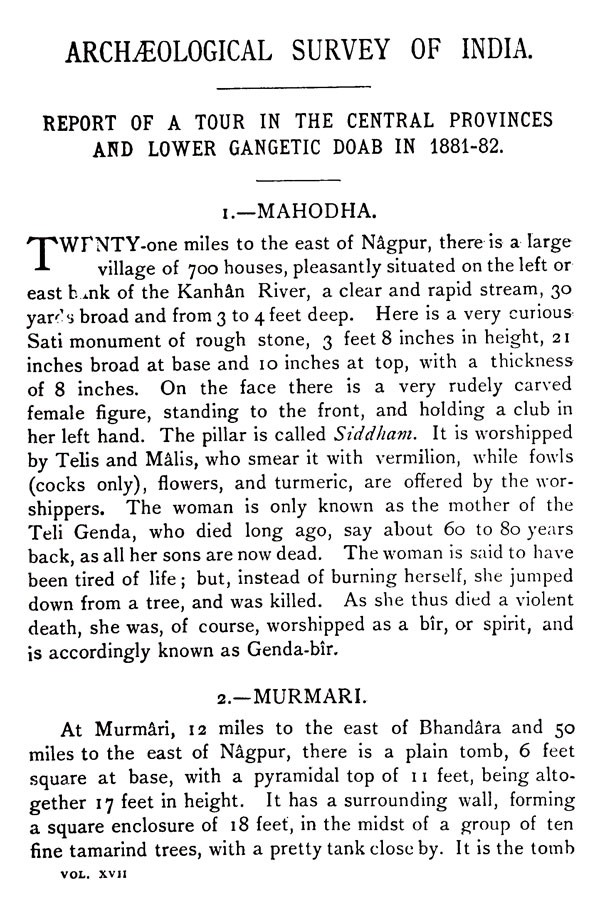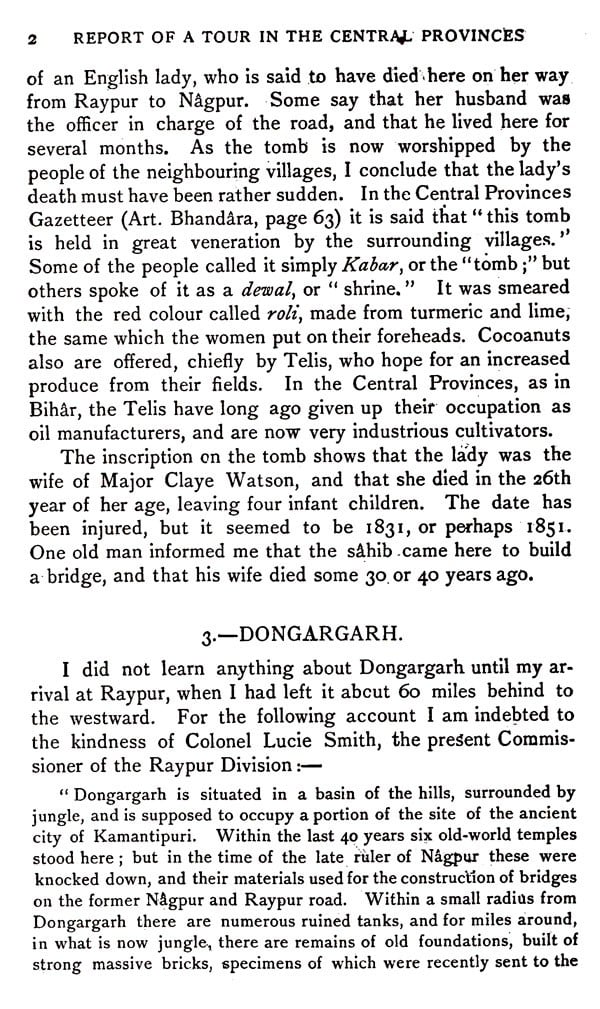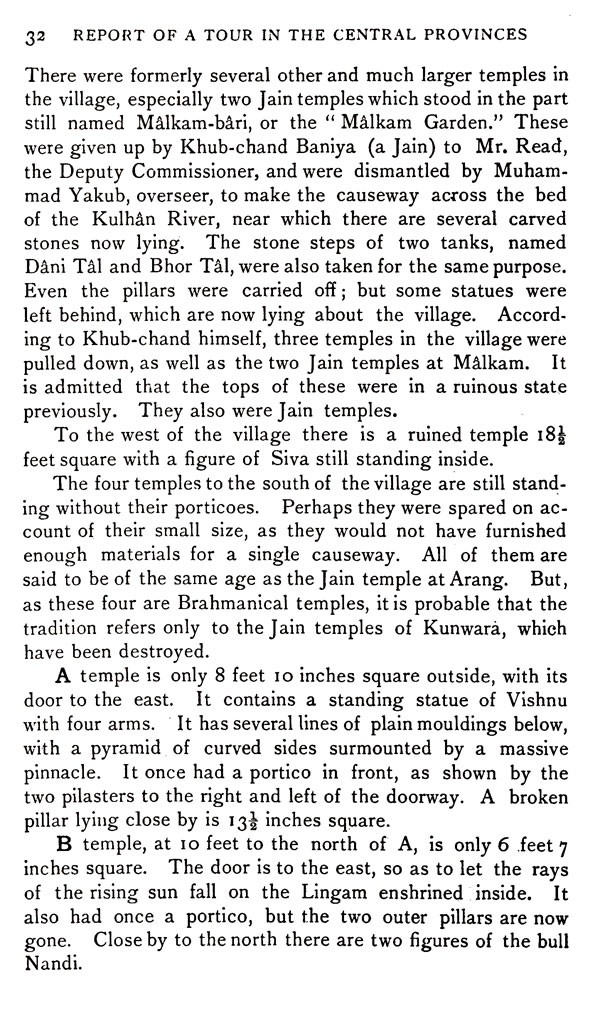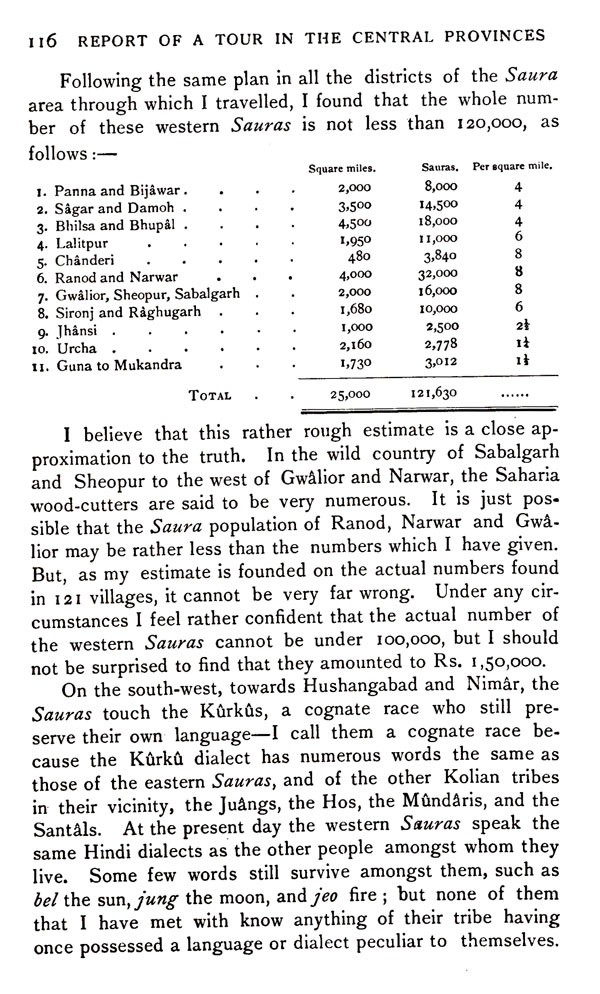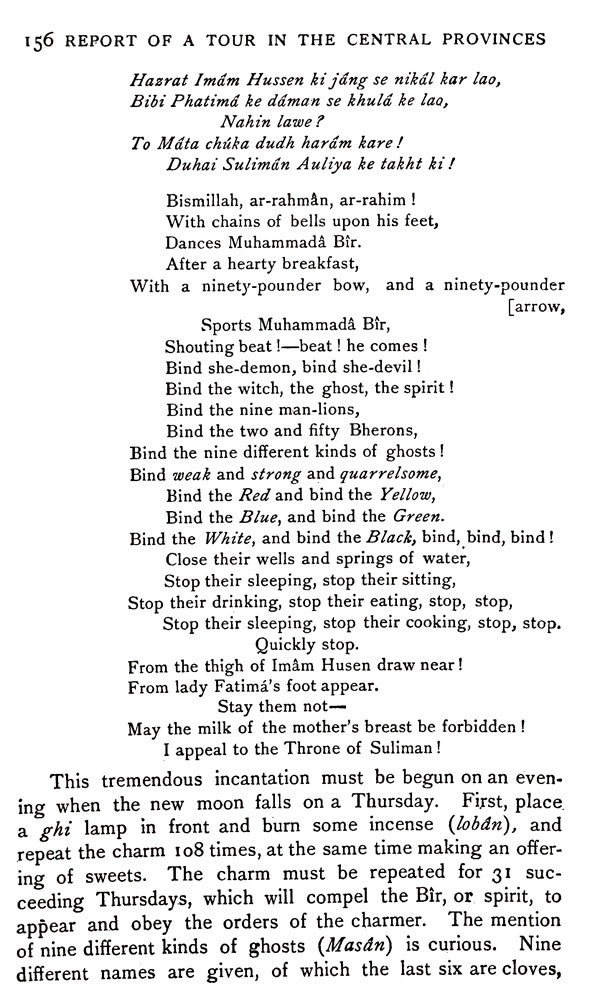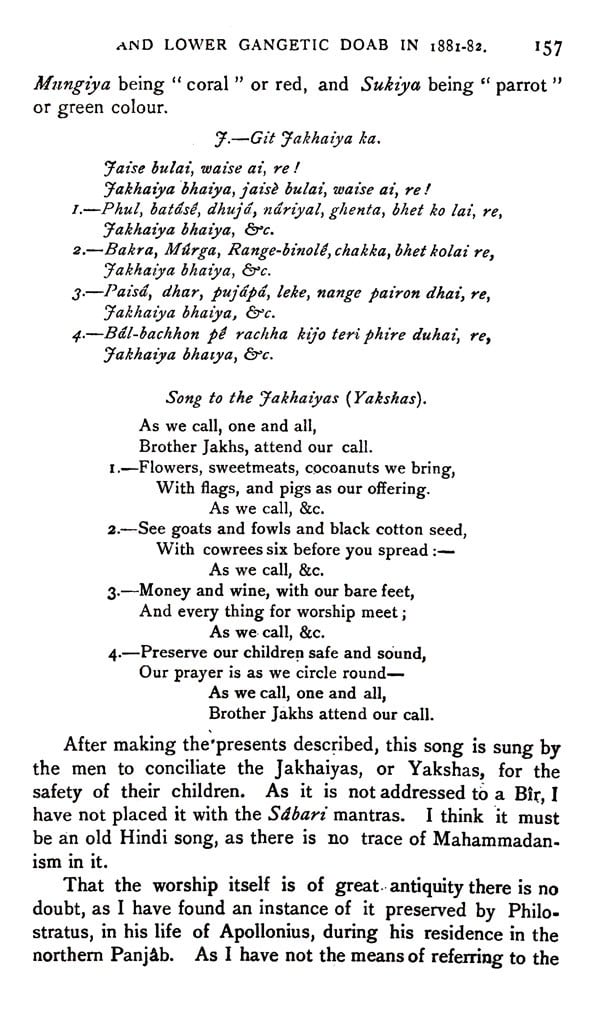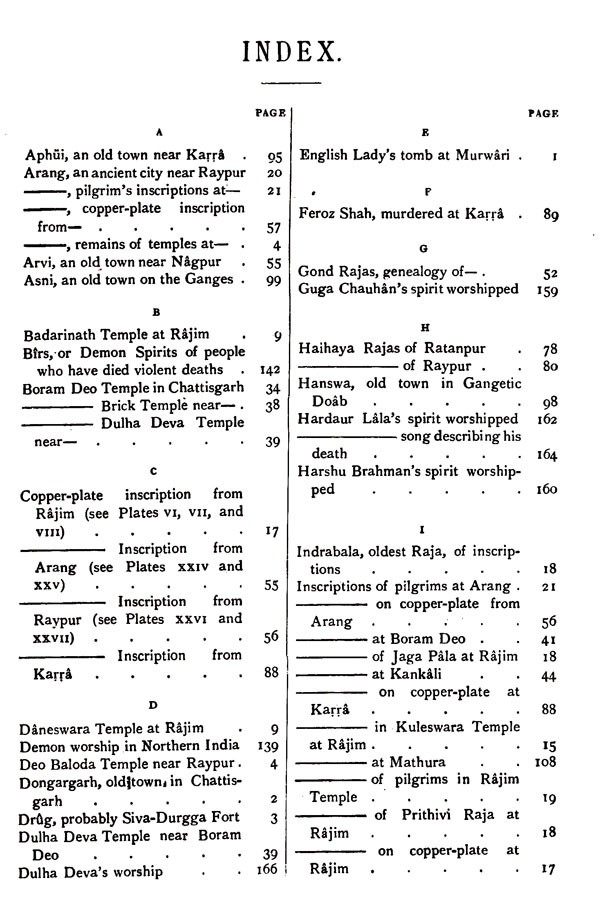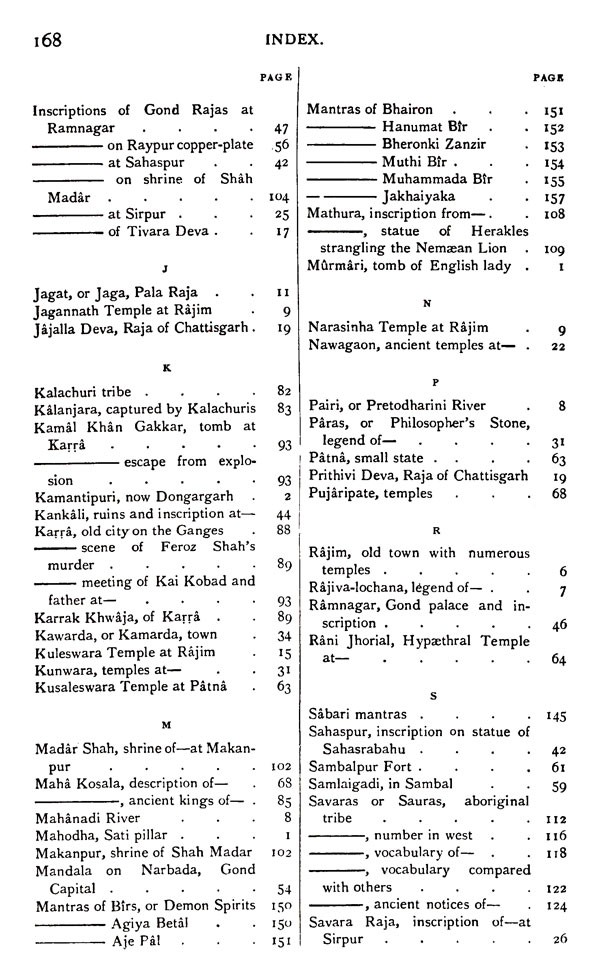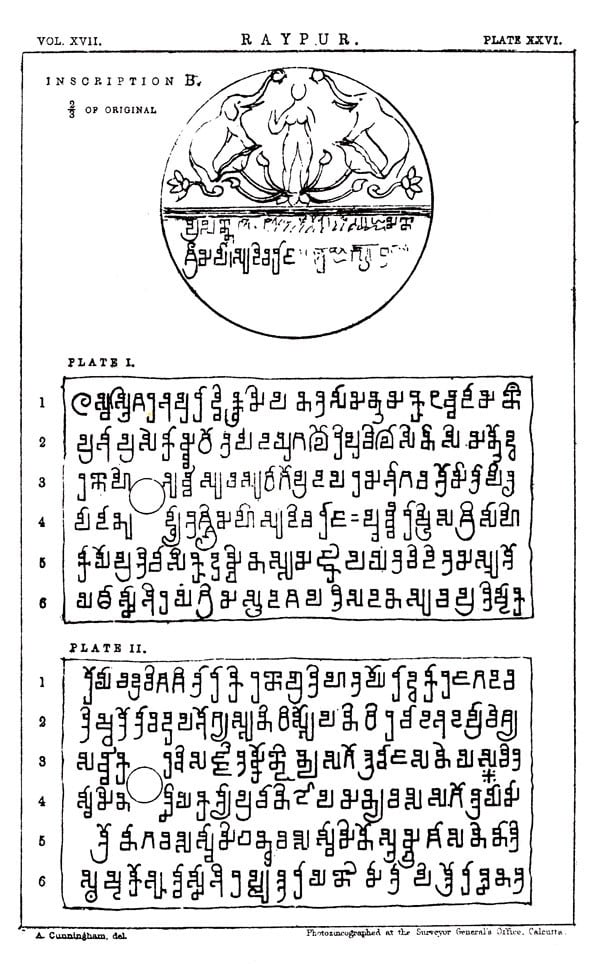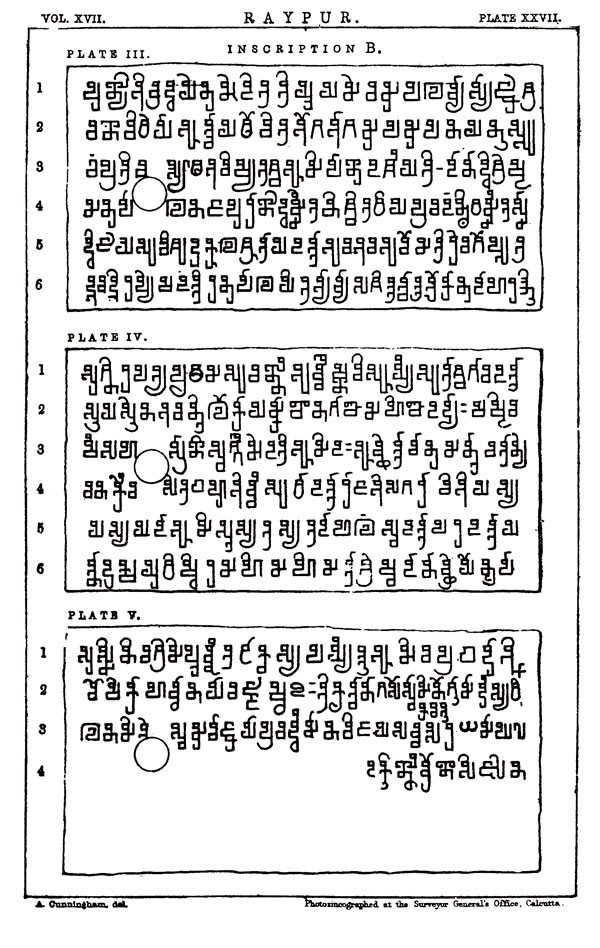
ASI Report of A Tour in the Central Provinces and Lower Gangetic Doab (Volume XVII)
Book Specification
| Item Code: | AZA499 |
| Author: | Alexander Cunningham |
| Publisher: | ARCHAEOLOGICAL SURVEY OF INDIA |
| Language: | English |
| Edition: | 2000 |
| Pages: | 248 (Throughout B/W Illustrations) |
| Cover: | HARDCOVER |
| Other Details | 9.8 x 6.5 inches |
| Weight | 680 gm |
Book Description
IN the present volume I have given an account of my tour in the Central Provinces during the cold season of 188182. My chief object was to explore the old cities of Râjim, Arang, and Sirpur, and to obtain copies of their ancient inscriptions. Rajim and Sirpur are both situated on the east or right bank of the Mahânadi river, at a distance of 40 miles apart, while Arang stands just half-way between them, but on the opposite bank of the river. The result of my researches shows that all the oldest remains that have yet been found in Mahâ-Kosala, or Chattisgarh as it is now called, belong to these three sites. I have but little doubt, therefore, that the ancient capital of the country was situated on the Mahanadi river at Sirpur, or Sripura, as it is called in the inscriptions. In my notice of Arvi, I have described one of the oldest copper-plate inscriptions as having been found there, as it is so assigned in the list of the Nagput Museum. But I have since learned from Colonel Bloomfield, who presented the plates to the Nâgpur Museum that they were found at Arang, or in the very heart of Mahâ-Kosala. I obtained this information too late to make the necessary correction in the text.
The remains at these three ancient sites are extremely interesting, as they differ from all the other temples that I have examined in Northern India, not only in their plans but in their decorations. They present no grand entrance to the front, which is quite open to the full breadth of the nave or hall, the only access being by small flights of steps from the sides. Their spires also are not so lofty as those of the mediæval temples, and their external ornamentation bears a strong resemblance to that of the great Buddhist temple at Mahâbodhi, or Buddha Gaya. Internally the pilasters on both sides of the nave are decorated with boldly sculptured figures which occupy the whole face of the shaft, after the fashion of the figures on the Buddhist railing pillars found at Mathura. But the subjects are all Brahmanical, and I found only one piece of Buddhist sculpture at Sirpur, while Râjim and Arang did not yield any Buddhist fragments.
I have given copies of all the ancient inscriptions from these old cities, and with their assistance I have attempted to frame a brief outline of the history of Mahâ-Kosala, from the third or fourth century of the Christian era down to the conquest of the country by the Mahrattas.
I paid a visit to the great temple of Boram Deo, in a secluded valley at the foot of the Mekhala hills near Kamarda. I was induced to go there by the general belief that this was a Gond temple, dedicated to the worship of the Nâga king. I found, however, that it was really a temple of Vishnu, and that the Gonds had nothing whatever to do with it, save the imposition of its present vernacular name of Boram Deo, or the “Great God.” I was well repaid, however, for my journey, as the temple is one of the finest buildings in the Central Provinces, both in size and in richness of ornament.
On my return I marched along the old line of road in the Gangetic Doab, from Karra towards Kanauj, in the hope of discovering some of the sites described by the Chinese pilgrim Hwen Thsang. In this hope I was disappointed; but I was partly repaid by the identification of several places of the old route recorded by Abu Rihân.
My tour was finished at Mathura, where I was fortunate enough to discover a half-life size statue of Herakles strangling the Nemaean Lion, which is now safe in the Indian Museum in Calcutta, after having been used for years as the side of a trough for watering cattle.
**Contents and Sample Pages**
